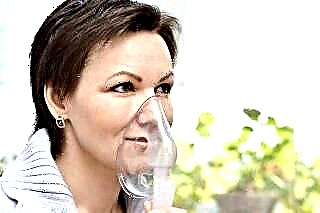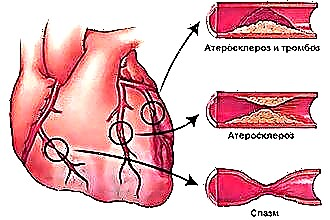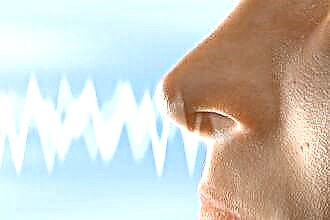Almost every one of us has faced the problem of hoarseness. In some people, coarseness of the voice occurs against the background of laryngitis, while others completely lose the ability to talk after a long loud singing or screaming. What is the reason for this? Lack of closure of the vocal cords leads to the fact that we cannot talk, which reduces the quality of life. If the pathology has affected professional vocalists, then they become unemployed altogether.
 In medicine, a change in the sonority of the voice due to non-closure of the ligaments is called dysphonia. It is only thanks to the ligaments that we manage to pronounce sounds. They are connective tissue in the lumen of the larynx. Why is my voice lost?
In medicine, a change in the sonority of the voice due to non-closure of the ligaments is called dysphonia. It is only thanks to the ligaments that we manage to pronounce sounds. They are connective tissue in the lumen of the larynx. Why is my voice lost?
- overstrain of the ligaments, which is typical for vocalists, teachers and announcers;
- complications after a sore throat, flu or laryngitis, that is, infectious diseases;
- Parkinson's disease;
- tumor damage to the brain;
- myasthenia gravis;
- laryngeal injuries and complications after surgery;
- chronic fatigue;
- consequences of traumatic brain injury;
- hormonal disorders. This applies to adolescence, when the voice "breaks";
- severe stress.
According to statistical data, it is women who are more prone to voice changes.
What are the symptoms of non-closure of the ligaments
The change in the sonority of the voice can occur abruptly or gradually. It all depends on the cause of the dysphonia. Given the variety of reasons, several forms of pathology are distinguished:
- hypotonic - manifested by a decrease in vocal strength, hoarseness and rapid fatigue when talking. Among the reasons, it is worth highlighting a decrease in the tone of the ligamentous apparatus, due to which the ligaments do not completely close;
- hypertonic - characterized by the appearance of sharp sounds, which makes it unusual for a person to hear altered speech. The reason is an increase in the tone of the ligaments and muscles;
- mutational - observed in boys during puberty, when the change in voice is due to hormonal fluctuations;
- aphonia - characterized by soundlessness of the voice. A person can only speak in a whisper;
- phonastenia - develops against the background of disorders of the nervous system, when a person is worried about soreness in the oropharynx and hoarseness. At the same time, there are no inflammatory and infectious causes;
- psychological dysphonia is triggered by psycho-emotional trauma.
If the cause of dysphonia is not eliminated in time, it can become chronic.
Diagnostic techniques
Diagnostics can be performed by an otolaryngologist or phoniatrist. To identify the cause and assess the severity of the pathology, the following is carried out:
- acoustic analysis;
- laryngoscopy, which allows you to examine the vocal cords and identify an inflammatory or tumor process;
- bacteriological examination of smears from the oropharynx;
- magnetic resonance imaging helps to identify a tumor;
- analysis of hormone levels.
Neurologists and endocrinologists can also be involved in the diagnosis.
Therapeutic tactics
It is necessary to start treating after identifying the cause. In the absence of an inflammatory process, infectious pathogens and tumors, treatment involves the use of:
- acupuncture;
- physiotherapy (impulse currents, electrophoresis);
- phonopedics, in which voice correction is carried out, teaching breathing techniques and mastering the muscles of the voice-forming apparatus for their relaxation;
- psychotherapy, which allows you to eliminate fears, identify the causes of disorders of the psychoemotional state and restore mental balance;
- collar massage to reduce muscle tension.
 If the analysis of the hormonal level reveals deviations, correction is performed. If infection or inflammation in the larynx is confirmed, treatment is carried out using antibacterial, antihistamines, antiviral agents, and antiseptic throat rinses.
If the analysis of the hormonal level reveals deviations, correction is performed. If infection or inflammation in the larynx is confirmed, treatment is carried out using antibacterial, antihistamines, antiviral agents, and antiseptic throat rinses.
In severe hypotonic dysphonia, the issue of surgical intervention is being resolved.
Drug therapy
Having diagnosed non-closure of the vocal cords, drug treatment is aimed at normalizing microcirculation in the vocal cord area. The treatment is usually long, so you should not hope for a quick result. This, of course, upsets people whose voice is their professional "attribute", but nothing can be done about it.
Therapeutic activities include:
- B vitamins;
- Proserin;
- Eleutherococcus extract;
- instillation in the larynx of hormonal agents with sea buckthorn, as well as menthol oil. Epinephrine may also be used;
- washing with antiseptic solutions (Dioxidine, Chlorhexidine);
- homeopathic medicines (Homeovox);
- herbal remedies (Isla) caress the mucous membrane of the larynx and ligaments, which will speed up the restoration of the voice;
- instillation of peach or apricot oil into the nasal passages.
For a sore throat, you can use:
- solutions with antiseptic, anti-inflammatory, decongestant and analgesic action for rinsing. For this, Rotokan, Furacilin, Tantum Verde or Chlorophyllipt are suitable;
- solutions in the form of a spray (Bioparox, Strepsils plus, Givalex, Ingalipt);
- tablets and lozenges (Faringosept, Decatilen, Strepsils, Septolete, Lizak).
Ethnoscience
In addition to medications and physiotherapeutic procedures, folk remedies can be prescribed. They allow you to speed up your recovery:
- warm milk with the addition of soda;
- still mineral water;
- in 450 ml of milk, it is enough to add a raw egg, 15 g of honey, butter, mix thoroughly and take half a glass in small sips three times in knocks;
- Boil 300 ml of milk with a medium-sized peeled onion and a tablespoon of honey. You need to boil for 10 minutes over low heat. Take in small sips twice a day;
- gargle with a decoction of herbs (sage, chamomile, echinacea). The procedure is repeated 4 times a day;
- it is possible to restore the integrity of the vocal cords after their injury with the help of a decoction of bay leaf. It is enough to boil 3 leaves in 240 ml of water for a quarter of an hour. Rinsing is repeated every 2-3 hours;
- with an inflammatory process in the oropharynx, apple cider vinegar can be used. In 240 ml of warm water, you can add 10 ml of vinegar and rinse your throat twice a day;
- butter or cocoa butter envelops the ligaments and makes them easier to move. Twice a day it is necessary to dissolve a piece of oil;
- Boil 100 g of anise seeds in 460 ml of water for a quarter of an hour over low heat. Then the broth should be filtered, add honey (70 g) and wait until it cools. By adding 15 ml of brandy, you can take a tablespoon every half hour;
- 15 g of anise seeds are poured into 480 ml of boiling water and infused for 25 minutes. The prepared infusion should be taken in 60 ml half an hour before meals;
- children can be given anise oil, which can be purchased at the pharmacy. You need to drop 2 drops of oil on a piece of sugar. The child will not refuse sweetness.
The use of inhalations for dysphonia is a controversial issue, therefore the procedure is carried out only after consulting a doctor.
Breathing exercises
 When a person has non-closure of the vocal cords, gymnastics is an effective method of treatment. It is carried out starting from the first day of therapy, in parallel with drug treatment. The following exercises should be done for three days:
When a person has non-closure of the vocal cords, gymnastics is an effective method of treatment. It is carried out starting from the first day of therapy, in parallel with drug treatment. The following exercises should be done for three days:
- imagine that you are caressing your throat without throwing your head back. When pronouncing the sounds typical for the procedure, you need to turn your head to the sides throughout the exhalation;
- after maximum inhalation, you need to exhale, hum and tap your fingers on the wings of the nose;
- Having inhaled as much as possible, you need to tap on mimic wrinkles while exhaling.
Three days after the start of gymnastics, the following exercises are added:
- to pronounce without stopping "by-by", in parallel with knocking on the upper lip;
- stretching the exhale, you need to sing "a-y", bang your fist on the chest in the direction from the left to the right shoulder;
- pronounce "uh", knock on the lower lip.
The phoniatrist can offer to master gymnastics according to Strelnikova's method, you should not give up, because the effect of it is excellent.
Voice Loss Prevention
The main preventive measures are to control the volume of the voice. Vocalists and teachers are advised to use the voice with particular care during periods of infectious inflammation of the larynx or throat. You should also control the duration of the performance.
Prevention means:
- exclusion from the nutritional diet of spicy, salty, sour, cold and hot dishes;
- quitting smoking and alcoholic beverages;
- a ban on taking cold drinks, ice cream after long singing and loud conversation;
- vitamin therapy (Supradin, Aevit);
- timely diagnosis and treatment of diseases of the broncho-pulmonary system, preventing chronic inflammation;
- limiting the action of stress factors that deplete the nervous system;
- getting enough sleep and rest;
- preventive observation by an ENT doctor;
- avoid contact with sick people with infections;
- avoid visiting crowded places during periods of an epidemic.
It is especially important to treat laryngitis on time, because inflammation quickly covers the vocal cords and leads to a change in voice. Note that after prolonged screaming and singing, it takes up to 8 hours of vocal rest to restore the integrity of the ligaments. If you carelessly treat the voice, there is a risk of the formation of singing nodules and hemorrhages.



